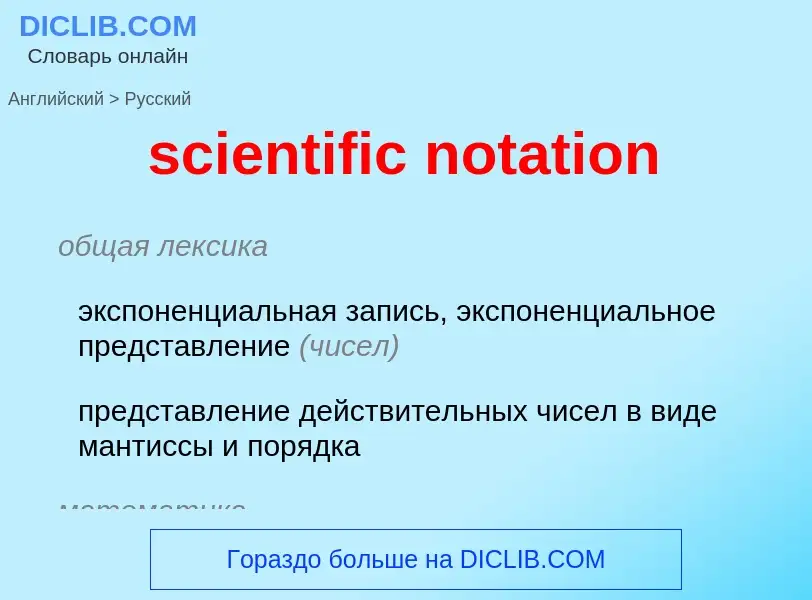Перевод и анализ слов искусственным интеллектом ChatGPT
На этой странице Вы можете получить подробный анализ слова или словосочетания, произведенный с помощью лучшей на сегодняшний день технологии искусственного интеллекта:
- как употребляется слово
- частота употребления
- используется оно чаще в устной или письменной речи
- варианты перевода слова
- примеры употребления (несколько фраз с переводом)
- этимология
scientific notation - перевод на русский
общая лексика
экспоненциальная запись, экспоненциальное представление (чисел)
представление действительных чисел в виде мантиссы и порядка
математика
экспоненциальное представление (чисел)
математика
экспоненциальное представление (чисел)
математика
логарифмическое представление
Определение
Википедия
Scientific notation is a way of expressing numbers that are too large or too small to be conveniently written in decimal form, since to do so would require writing out an unusually long string of digits. It may be referred to as scientific form or standard index form, or standard form in the United Kingdom. This base ten notation is commonly used by scientists, mathematicians, and engineers, in part because it can simplify certain arithmetic operations. On scientific calculators it is usually known as "SCI" display mode.
In scientific notation, nonzero numbers are written in the form
or m times ten raised to the power of n, where n is an integer, and the coefficient m is a nonzero real number (usually between 1 and 10 in absolute value, and nearly always written as a terminating decimal). The integer n is called the exponent and the real number m is called the significand or mantissa. The term "mantissa" can be ambiguous where logarithms are involved, because it is also the traditional name of the fractional part of the common logarithm. If the number is negative then a minus sign precedes m, as in ordinary decimal notation. In normalized notation, the exponent is chosen so that the absolute value (modulus) of the significand m is at least 1 but less than 10.
Decimal floating point is a computer arithmetic system closely related to scientific notation.

